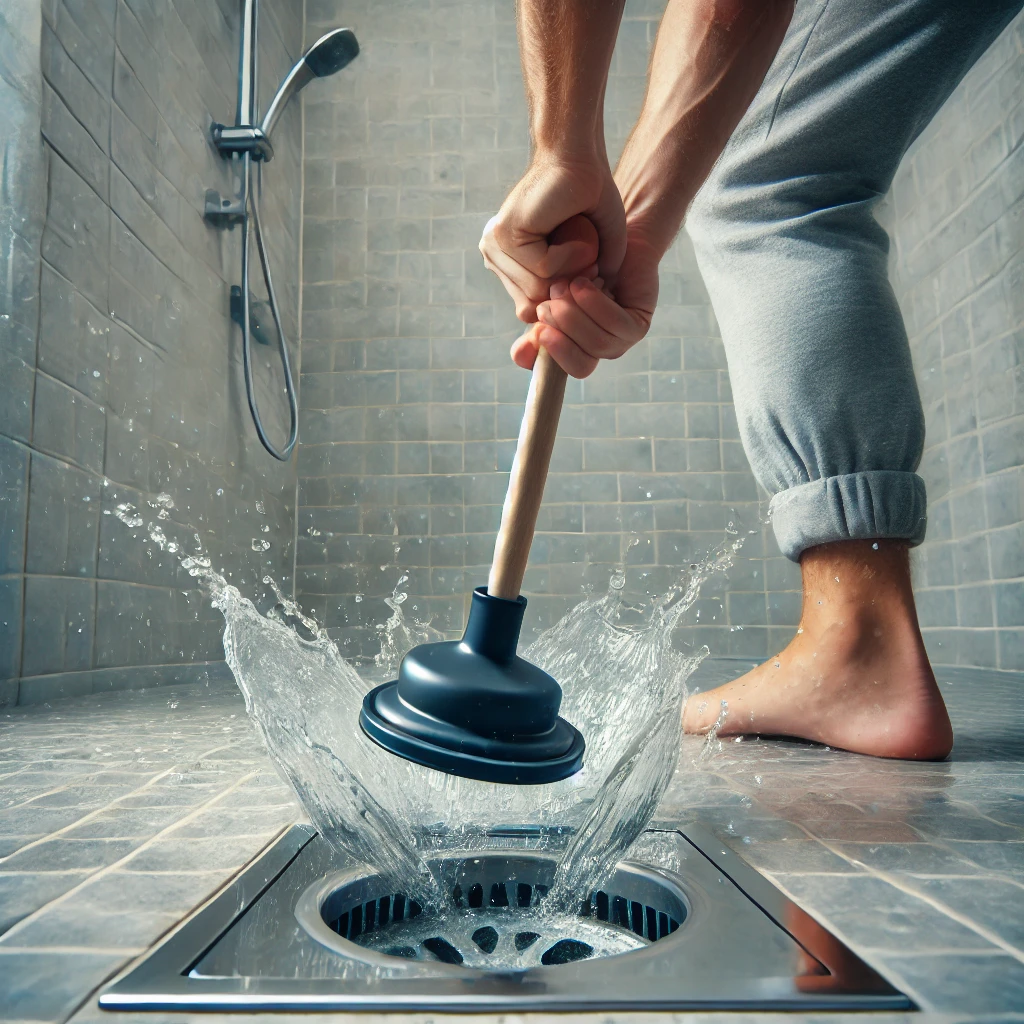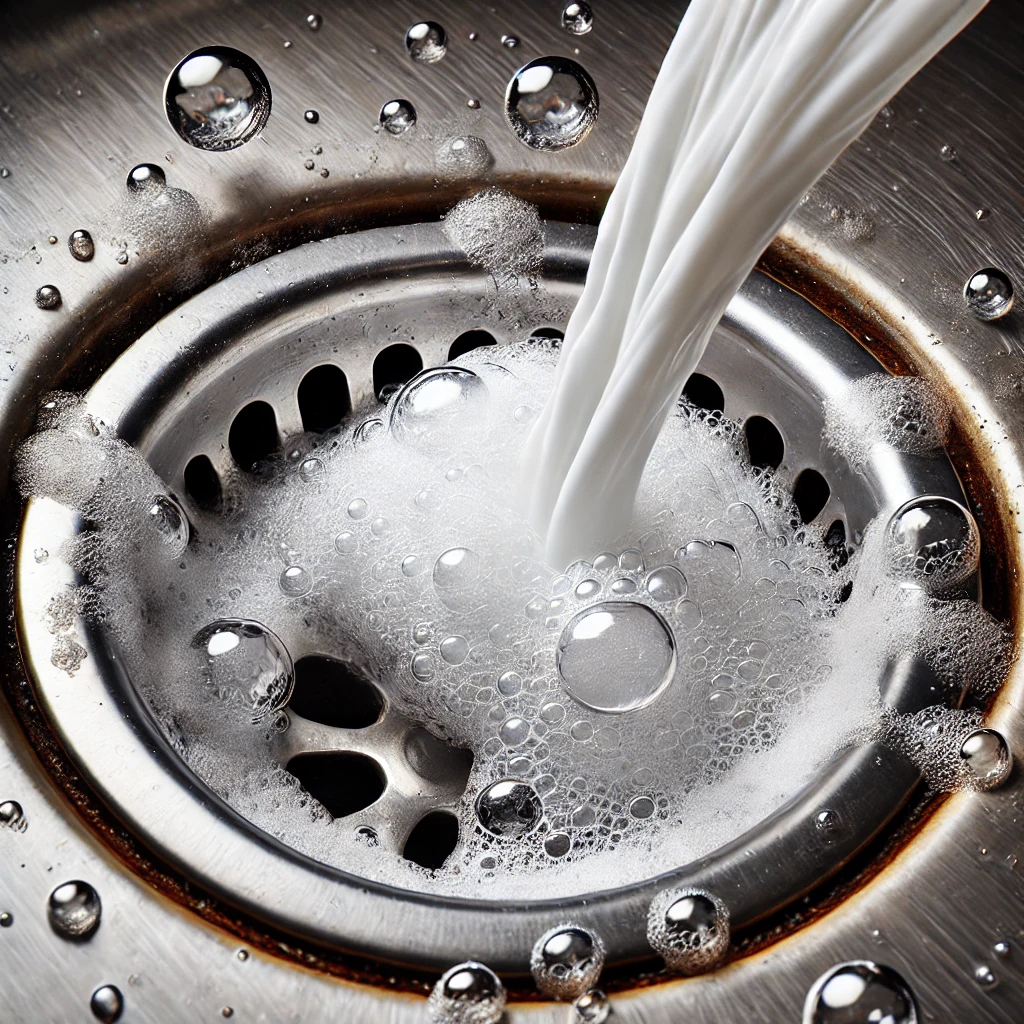A clogged shower drain is one of the most frustrating household issues. Whether it’s caused by hair, soap scum, or other debris, a blockage can lead to slow drainage, unpleasant odors, and even flooding if left untreated. But don’t worry—this comprehensive guide will walk you through five proven DIY methods about How to unclog a shower drain.
In addition to unclogging techniques, you’ll also learn why drains get clogged, the types of drains that require different approaches, how to prevent future clogs, and when to call a professional emergency plumber. With expert insights, product recommendations, and real-life examples, this guide ensures you’re well-equipped to tackle any shower drain issue.
Table of Contents
Why Do Shower Drains Get Clogged?
Shower drains can become clogged due to various factors. Some are gradual, others can happen suddenly, but knowing the causes can help you prevent future blockages.
Here are the most common reasons why your shower drain gets clogged:
1. Hair Buildup
One of the most frequent causes of clogged drains is hair. Long hair, in particular, can easily accumulate in the pipes, creating a tangled mess that traps other debris.
2. Soap Scum
Soap scum forms when soap mixes with the minerals in water, especially in areas with hard water. Over time, it forms a sticky residue that coats the pipes, making it easier for hair and dirt to get stuck.
3. Mineral Deposits
If you live in a hard-water area, mineral deposits from calcium and magnesium can build up inside your pipes, reducing the flow of water and increasing the likelihood of clogs.
4. Dirt, Oils, and Grease
Showering rinses away dirt, oils, and other personal care products, which can combine with soap and hair to create a clog. This is particularly common if you use oil-based soaps or conditioners.
Pro Tip: If your area has hard water, consider using a water softener to reduce soap scum and mineral deposits in your pipes.
Types of Shower Drains
Different shower drains can affect how easily you can clean or unclog them. Knowing which type you have can help you choose the best method.
1. Traditional Round Drains
This is the most common type of drain, found in older homes and apartment buildings. They are typically easy to access for DIY methods.
2. Linear Drains
Common in modern bathrooms, linear drains run along one side of the shower floor. Because of their larger surface area, they might require more attention to keep clean.
3. Pop-up Drains
These drains come with a stopper that can trap hair and soap. Cleaning can be trickier, as you’ll need to disassemble the stopper before clearing the clog.
4. Tile Insert Drains
Typically found in high-end bathrooms, these are concealed drains that blend in with the tiles. While stylish, they may be more difficult to access for DIY unclogging.
Tip: No matter what type of drain you have, using a drain cover can drastically reduce the likelihood of clogs.
5 DIY Methods about How to Unclog a Shower Drain
Now that you know what causes clogs, let’s get into the DIY methods you can use to unclog your shower drain. Whether it’s a simple blockage near the surface or a deeper clog, these methods cover every scenario.
Method 1: Manually Remove Hair and Debris
The easiest solution to a clogged drain is often the most effective: simply remove the blockage manually.
What You’ll Need:
- A screwdriver (for removing the drain cover)
- Gloves
- A wire hanger or hair removal tool
You can Easily But it From Amazon.com if you dont have these tools.
Steps:
- Remove the Drain Cover: Use a screwdriver to unscrew the drain cover. Some covers may simply lift off, depending on the design.
- Pull Out Debris: Using a bent wire hanger or a specialized hair removal tool, pull out any visible hair or debris. Be sure to wear gloves to keep things hygienic.
- Flush with Hot Water: Once the debris is removed, pour hot water down the drain to clear away any remaining particles.
Method 2: Use a Plunger

If the clog is deeper down the pipe, a plunger can help dislodge it.
What You’ll Need:
- A standard plunger
- Enough water to cover the drain area
Steps:
- Submerge the Plunger: Fill the shower with enough water to cover the plunger’s rubber lip.
- Create a Seal: Place the plunger over the drain, ensuring that you have a tight seal.
- Plunge Vigorously: Push and pull the plunger quickly for 20-30 seconds. Repeat if necessary.
- Flush with Water: Once the clog is dislodged, pour hot water down the drain to clear out the debris.
Read this: Your Trusted Plumbing Experts in Abbotsford: Fast, Reliable, and Affordable Services
Method 3: Baking Soda and Vinegar Solution
A natural and eco-friendly method, baking soda and vinegar can help dissolve small clogs.
What You’ll Need:
- 1 cup of baking soda
- 1 cup of white vinegar
- Boiling water
Steps:
- Pour Baking Soda: Pour 1 cup of baking soda directly into the drain.
- Add Vinegar: Pour 1 cup of white vinegar. The mixture will fizz and bubble—this reaction helps break down the clog.
- Wait 20-30 Minutes: Allow the solution to sit and do its work.
- Flush with Boiling Water: After waiting, pour a kettle of boiling water down the drain to rinse everything away.
Method 4: Drain Snake
For tougher, deeper clogs, a drain snake (or plumber’s auger) is your best option.
What You’ll Need:
- A drain snake (available at hardware stores)
Steps:
- Insert the Snake: Feed the snake into the drain while rotating it clockwise.
- Dislodge the Clog: Once you encounter resistance, rotate the handle to break up or capture the clog.
- Pull Out the Snake: Carefully remove the snake and check if the clog is attached.
- Flush with Hot Water: Finish by flushing the drain with hot water to remove any remaining debris.
Method 5: Chemical Drain Cleaners (Use with Caution)

Chemical drain cleaners can be an effective last resort, but they should be used sparingly due to their potential to damage pipes over time.
What You’ll Need:
- A commercial drain cleaner
Steps:
- Pour the Cleaner: Follow the instructions on the product label carefully.
- Wait: Allow the cleaner to sit for the recommended time (usually 15-30 minutes).
- Flush with Water: After the waiting period, flush the drain with hot water.
Warning: Do not mix chemical drain cleaners, as they can release harmful fumes.
Tools You May Need to Unclog a Shower Drain
Having the right tools on hand can make unclogging a shower drain quicker and easier. Here are some of the best tools:
- Drain Snake: Ideal for deep, stubborn clogs.
- Plunger: Great for dislodging blockages near the surface.
- Hair Removal Tool: Specifically designed to pull out hair and other debris.
- Baking Soda & Vinegar: A natural, chemical-free solution for minor clogs.
Image suggestion: A tool comparison chart showing each tool with a brief description of its use.
DIY vs. Hiring a Professional: A Cost Comparison
While many clogs can be fixed with a bit of DIY effort, sometimes it’s worth calling a plumber. Here’s a cost comparison:
| Option | Estimated Cost |
|---|---|
| DIY Methods (Tools) | $15 – $50 |
| Chemical Drain Cleaners | $10 – $30 |
| Hiring a Plumber | $100 – $250 (per hour) |
How to Prevent Future Clogs
Prevention is the best strategy to avoid clogged shower drains in the future. Here are some practical tips to keep your drain flowing freely:
- Use a Drain Cover: A drain cover will catch hair and debris, making cleanup much easier.
- Flush with Hot Water: Once a week, pour a kettle of boiling water down the drain to help dissolve soap and oil buildup.
- Regular Maintenance: Clean the drain once a month, removing any visible debris.
- Avoid Oils: Avoid using heavy conditioners and oil-based products that can solidify in the pipes.
What’s the best way to prevent clogs?
The best way to prevent clogs is to use a drain cover and regularly flush the drain with hot water. Clean it out once a month, especially if you have long hair or use heavy oils.
Can I use chemical cleaners on any type of drain?
Chemical drain cleaners should be used sparingly, especially in homes with older pipes. Consider using enzyme-based cleaners that are gentler on the environment and your plumbing.
How often should I clean my shower drain?
Aim to clean your drain at least once a month. This will prevent large buildups of hair, soap scum, and dirt.
Conclusion
Unclogging your shower drain is a manageable task when you know the right methods and tools. Whether you choose a natural remedy like baking soda and vinegar or a more mechanical solution like a plunger or drain snake, there’s a method to match every clog. Remember, regular maintenance and prevention are key to avoiding future blockages.
I hope this Detailed blogpost about How to unclog a shower drain will be very beneficial for You.
Otherwise, If these DIY methods don’t work, or you’re dealing with recurring clogs, it may be time to contact a professional plumber for a thorough inspection. A clean and clear drain not only improves your shower experience but also extends the life of your plumbing system.

